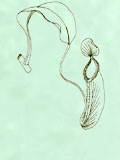

Editorial (pdf)
It is the Year of the Monkey and everywhere there are pictures of monkeys - and of gibbons, and of bizarre gibbon-monkey hybrids, with gibbon arms and a monkey tail. Gibbons aren't monkeys, of course, but apes, more closely related to us than to the macaques, which are the most widespread monkeys in China. Why this confusion between two very different native animals? The reason is both instructive and very, very sad. A millennium ago, there were gibbons throughout southern and central China. The rich kept them as pets, and both painters and poets admired their graceful movements and haunting calls. Nobody confused noble gibbons with vulgar macaques. China's population increased, forests disappeared, and gibbons became increasingly scarce. By the 17th century they were confined to the south - including, probably, Hong Kong - and by the twentieth century to the remote southwest. As gibbons retreated, painters and poets came to depend on secondhand sources and gibbons were increasingly confused with macaques, which remained widespread in China until recently. In December, I visited Bawangling and heard one of the last two groups of Hainan gibbons. Gibbon songs are targeted at rival groups kilometres away, but there is no need for this at Bawangling. The sad and lonely calls echo over across plantations where no gibbons survive to listen. No, this is not the Year of the Gibbon.
P.2
|
Porcupine! |
 Copyright © 2000 |